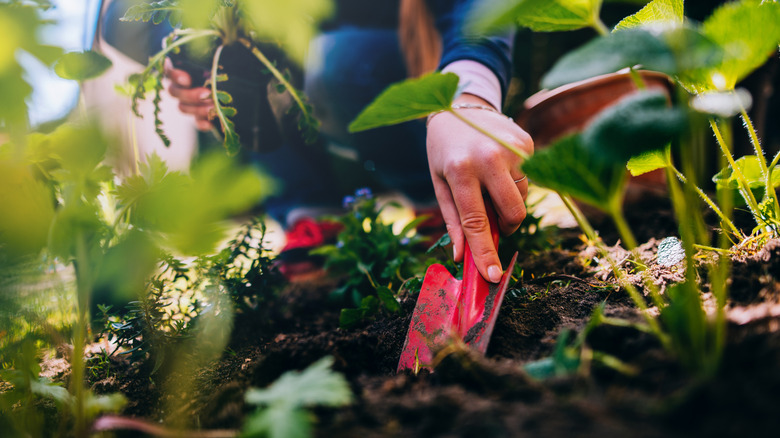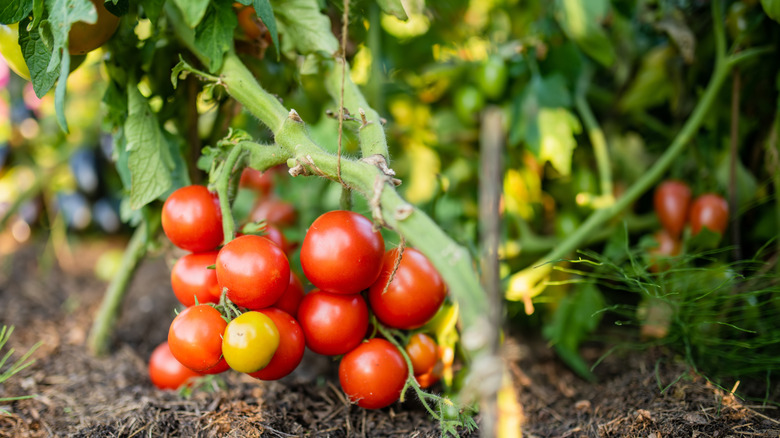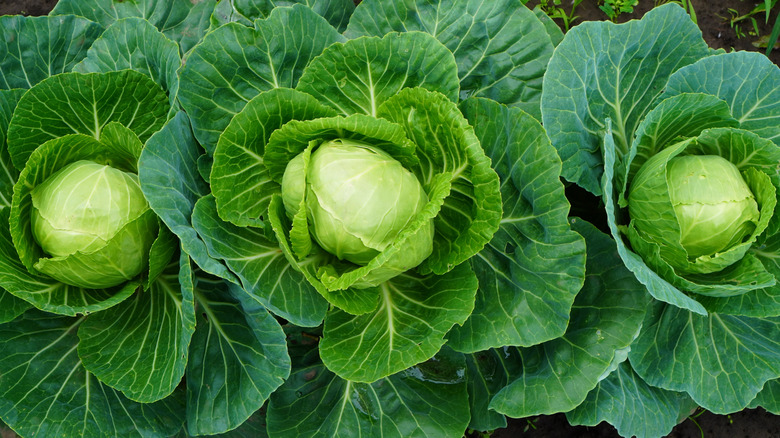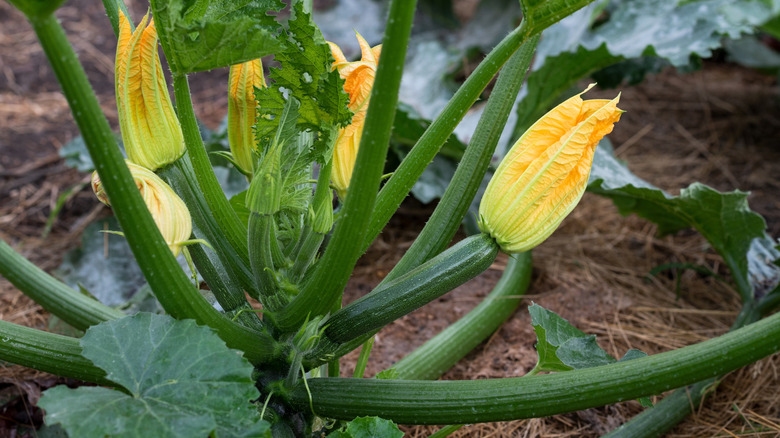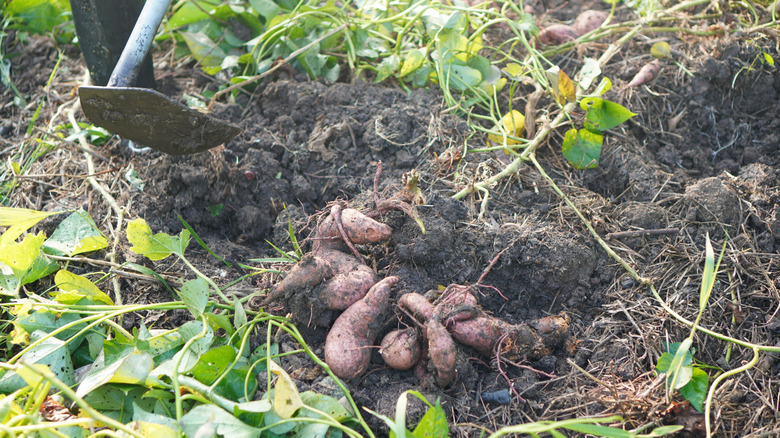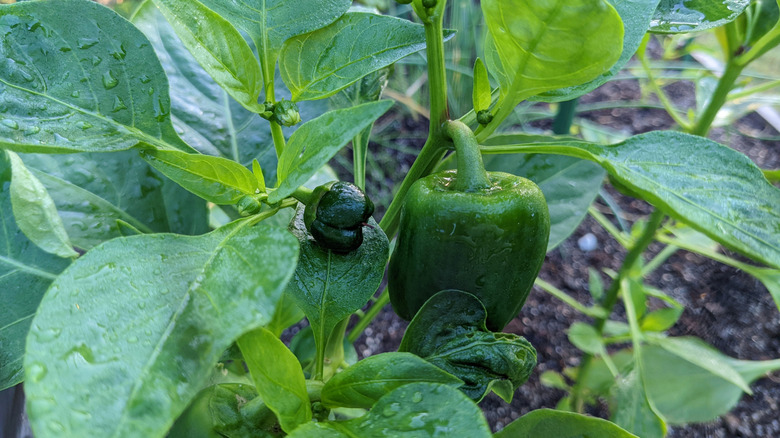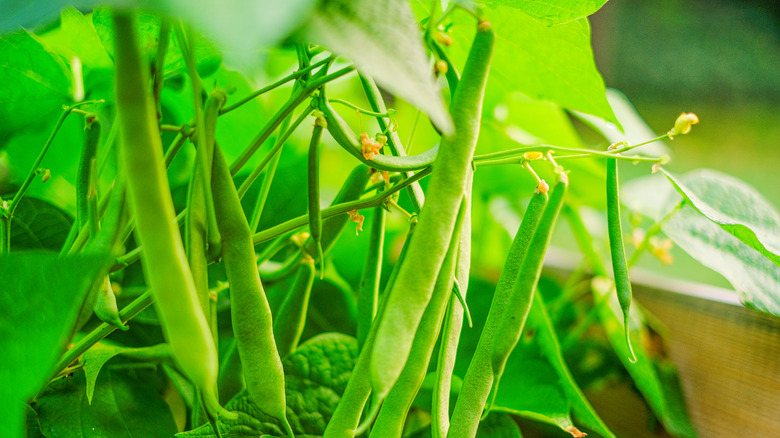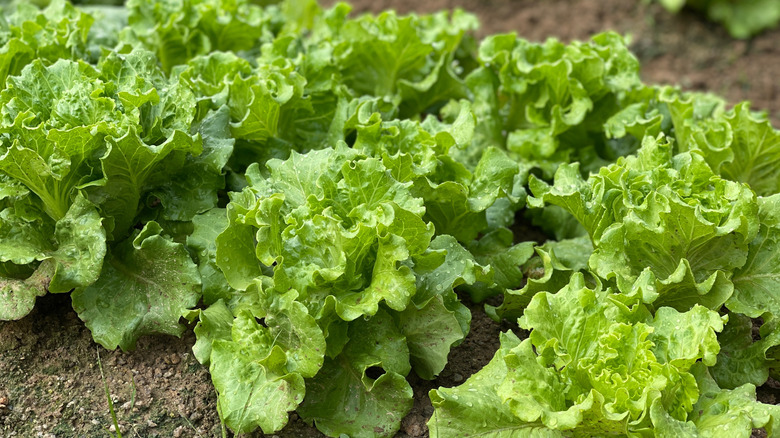7 Tasty Veggies That Will Happily Grow In Clay Soil
I hate to brag, but growing food in clay soil is kind of my specialty. I didn't choose the clay soil life — it chose me. I grew up exploring my grandpa's garden, seeing (and tasting!) what he harvested. Having grown up during the Depression, my grandpa knew how to make the most of what he had, and he had a large yard with clay soil. And he also had the most beautiful, productive garden.
For years, I've grown my own successful garden in dense clay soil, and there are pros and cons. Unlike sandier soils, it holds water well, which is particularly helpful during a drought. It's less helpful during heavy rains, but as long as your garden space doesn't collect water, that's not a long-term problem. The same conditions that help clay soil retain water also help it hold onto nutrients better than lighter soil.
As House Digest's Garden Editor and in-house Master Gardener, I'm happy to share that some plants that have thrived in my clay soil include tomatoes, green beans, lettuce, and more. That said, I can offer a broad statement of what does not grow well: root veggies. Garlic has smaller heads, so I've managed to grow some decent cloves, although it was nothing exceptional. Bulb onions, English potatoes, and carrots are in the "saddest harvest" category of my garden experience. That's OK, though. I can grow them in containers or, more likely, just buy them at the grocery store. Luckily, my favorite veggies do well in clay soil.
Tomatoes
I love tomatoes, particularly flavorful heirloom varieties like Cherokee purple slicing toms and peacevine cherries. Although more modern, common varieties like 'Celebrity' and 'Rutgers' also do well in clay soils, heirloom species tend to be more tolerant of a wider variety of soil conditions, including clay. Some species, like 'Ozark Pink,' developed at the University of Arkansas, were bred for difficult soils and disease resistance. Tomatoes need full sun and plenty of space to grow. Avoid these common mistakes when transplanting tomatoes for the best harvest.
Cabbage
A neat row of cabbage heads just makes me happy. I may be in the minority, but this vegetable is one of my favorites to grow because of its versatility. There are early and late varieties of cabbage, like early Jersey Wakefield, which can be planted in late winter or early spring, depending on where you live. Late-season options, including late flat Dutch, can be grown well into late fall or even through winter in areas that stay mild. Cabbage is one of those veggies that can fill the gap between seasons because it's so hardy.
Squash
Whether you are growing summer or winter squash, both do well in clay soil. These plants appreciate consistently moist soil, particularly in the extreme heat of summer. Their large leaves hold a lot of water, so you might notice on extra hot days, they wilt. This happens as a result of the plant protecting itself — it pulls moisture from the leaves to the roots to stay alive. Those leaves will perk back up when conditions cool, so don't panic. If you're new to growing squash, Bennings green tint is my favorite for beginner gardeners (and everyone else, too!).
Sweet potatoes
Sweet potatoes are my exception to the "no root crops" rule for clay soils. Unlike English potatoes that require hilling when grown in the ground, sweet potatoes grow closer to the surface. These heat-loving tubers will grow larger in lighter soils, but I've managed some very decent harvests simply by loosening the soil well before planting and amending with a bit of compost. Sweet potatoes are worth the space because they offer a double harvest: You can eat the young leaves during the growing season and dig up the roots in the fall.
Peppers
Peppers and tomatoes require very similar growing conditions. They like a lot of sun and heat and can tolerate some drought. These veggies can grow strong, deep root systems even in dense clay soil. I have grown many different kinds of peppers with great success in my garden. Bell peppers, Anaheim, jalapeno, and banana peppers have all performed exceptionally well with consistent watering and fertilization. In fact, the banana peppers grew so well, I was trying to force them upon anyone who would take them off my hands.
Green beans
In my dense clay garden, I'm not sure anything has been easier to grow than green beans. I've grown dragon's tongue bush beans, yellow wax beans, and one of the most common varieties, 'Kentucky Wonder' bush and pole beans. Although green beans are relatively short-lived plants, you can do a few succession plantings in areas that have a long summer to get a season full of harvests. This is particularly useful if you like to preserve your green beans. If you're feeling adventurous and have the space, purple yardlong beans are a beautiful, fast-growing addition to the garden.
Lettuce
For an early spring crop that lasts until the heat of summer, lettuce is a must-grow. I like growing a combination of head and leaf lettuce varieties. As the name implies, head lettuce grows until it forms a full head. Iceberg is one of the most recognizable, but it doesn't grow well in warmer climates. Romaine and butterhead varieties are great for most areas. 'Black Seeded Simpson' seeds can be found almost anywhere and provide tasty leaves that you can harvest as needed. Also, consider leaf lettuce mixes if you want some variety in your daily salad.
